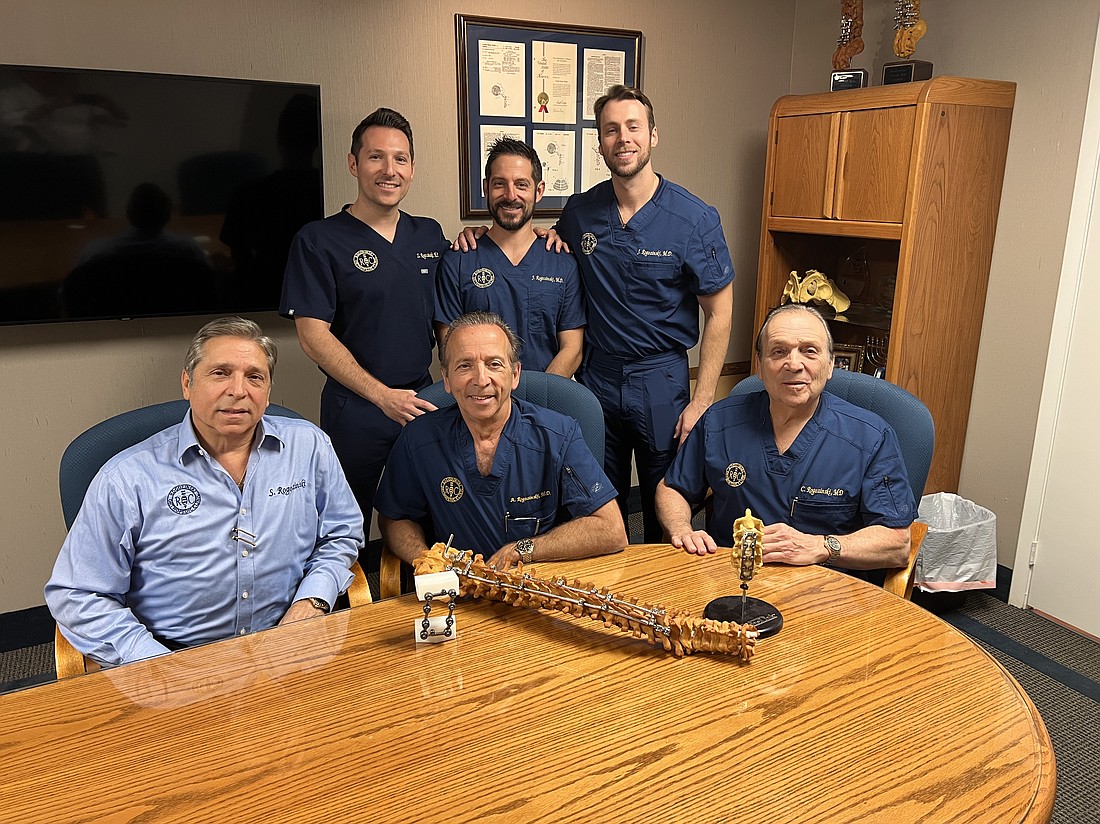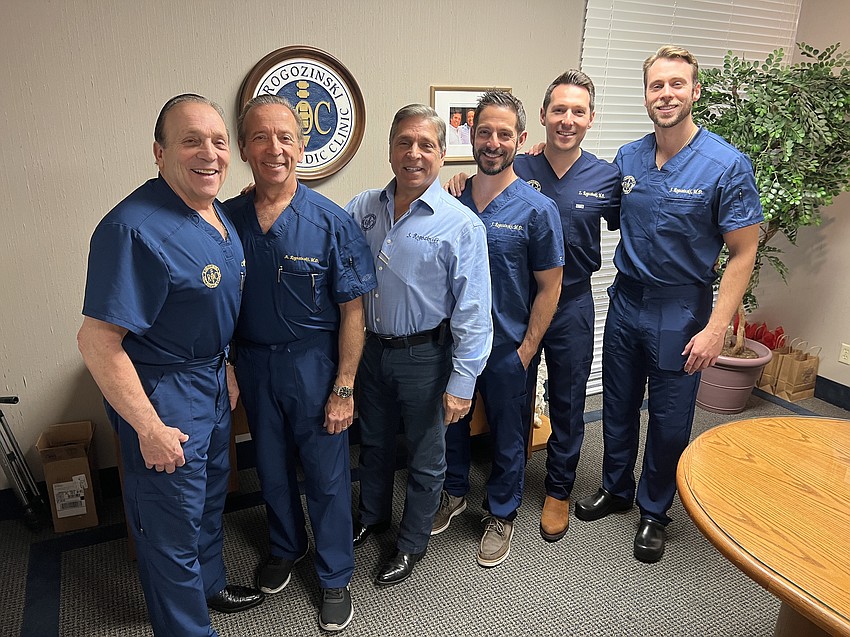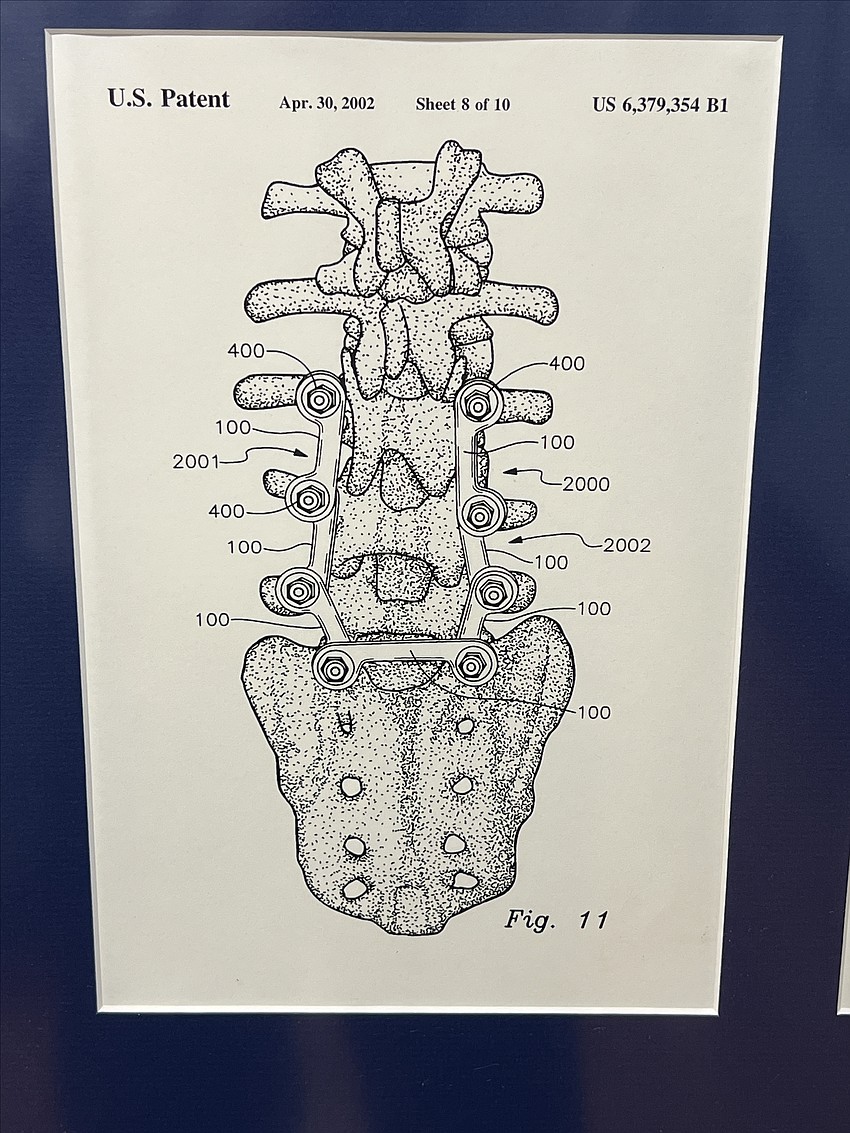
When someone calls out for Dr. Rogozinski at the Rogozinski Orthopedic Clinic, several heads may turn. Five to be exact, and the COO may also poke his head out of his office.
Three brothers and three sons reflecting two generations of Rogozinkis are part of the same practice.
Chaim, 73, founded the practice 40 years ago. Abe, 69, joined a year later. Brother Sam, 63, put his degree in finance to use by becoming the company’s COO in 1992.
Abe’s son Josh, 37, joined in 2018. In September, Zachary, 32, another of Abe’s sons, and Jonathan, 33, Chaim’s son, joined the practice.
Theirs is a tight-knit family.
They not only work together, but the six of them eat lunch together daily at noon.
The three elder Rogozinski brothers were raised by parents Jakob and Ella Rogozinski, who were Holocaust survivors. Jakob was from Poland and Ella from the former Czechoslovakia.
Nearly all of their families were killed in the death camps. The two met in Germany after their release and were married.
When Jakob learned of a brother living in Israel, the couple went to live there for a while, then decided to move to Jacksonville so Ella could be closer to two sisters.
They came to the U.S. not knowing English with little money. They learned to read English by studying their sons’ “Dick and Jane” first-grade reading books.
Jakob worked as a master mechanic at a Volkswagen dealership. He was also a shade-tree mechanic who fixed neighbors’ cars on the side.
Ella worked at Underwood Jewelers Downtown and later in San Marco.
Each was dexterous with tools, just as their sons and grandsons are with orthopedic tools.
The doctors Rogozinski also design tools.

Chaim and Abe have 18 medical patents and a 19th is under review. The designs for screws, implantable braces and other surgical devices decorate several walls in their office at 3716 University Blvd S., across from HCA Florida Memorial Hospital.
“Our products actually have come to market. They’re not just a sketch on a napkin,” Abe said.
The brothers are proud that their inventions are being used all over the world. At one time Chaim and Abe traveled the globe giving lectures and demonstrations.
For a time, doctors would come to Jacksonville to see operations involving Rogozinski-designed instruments and braces.
Their work has been written about in surgical texts and peer-reviewed journals.
Being a part of a private practice appealed to the second generation. The norm today is to join a large, corporate-owned practice or become a member of a hospital.
“A lot of these firms are owned by venture capital groups. You kind of lose the autonomy,” Sam said.
“The doctor doesn’t get to make the choices that he needs to make that are best for the patient. And the doctor is really not happy. And this is the complete opposite of that. You know, the doctors are happy that doctors get to make the decisions.”
The elder brothers have been close all of their lives.
When they started the practice they had breakfast with their mother at 6 a.m. every day. They called it their daily “board meeting.”
Sam outfitted a detached garage into a gym and when the three brothers worked out they’d bring over the cousins to play together after school.
The younger Rogozinskis to a man said there was no pressure to become orthopedic surgeons or even doctors. They grew up in the business.
Abe took his sons on Saturday rounds. They learned about medicine and the workings of a hospital at an early age, but Josh admits the candy in the gift shop was their favorite part of Saturdays at the hospital.
They also were frequent visitors at their fathers’ offices, as was grandfather Jakob after his retirement. He’d come by every day to run errands, fix something or simply chat with patients.

Becoming an orthopedic surgeon is no easy pursuit.
There are four years to earn an undergraduate degree, four years of medical school, five years of orthopedic surgery residency and a one-year fellowship to learn an orthopedic specialty.
“I tried not to go into orthopedics, but I found it too interesting. It’s in our blood,” Josh said.
While in residency, new surgeons work in pairs to have another set of hands and eyes while operating.
The Rogozinskis continue this practice.
The five all work at a long, standup desk that is more like a shelf with five laptops. They often discuss patients and their treatments. Their practice comes with a ready-made second opinion.
“It’s uncommon to have two professionals on one case. There’s a comfort level of knowing who is on the other side of the table and what kind of set of hands they have. And it’s just not really heard of, but there are two surgeons pretty much on every case,” Sam said.
“We tend to do our dual scrub cases together. So nobody’s ever on an island by themselves,” Josh said.
With two generations of surgeons in the practice it allows for a free exchange of ideas, Abe said.
“You might think that after 40 years you’d get a little bit stale. Perhaps since these guys have joined us it has really made us step up our game,” Abe said.
“And the conversations between us in terms of the new technologies and procedures they bring compared to what we were doing, it has been really been quite an exciting evolution.”
The other Rogozinski children also have good careers. Among them are two others involved in medicine – one a hand surgeon, one a physical therapist – as well as a couple of lawyers and another in finance.
Jakob died in 1995 and Ella, 96, is in an assisted living residence.
Ella had been told not to expect a family at all.
“She was told by the GI doctors who evacuated her that due to the hardships she endured she was lucky to be alive but don’t count on any children,” Abe said.
A family portrait taken this year over Rosh Hashana proved them wrong.
There were 43 fathers, mothers, sons and daughters, spouses and grandchildren in the picture.